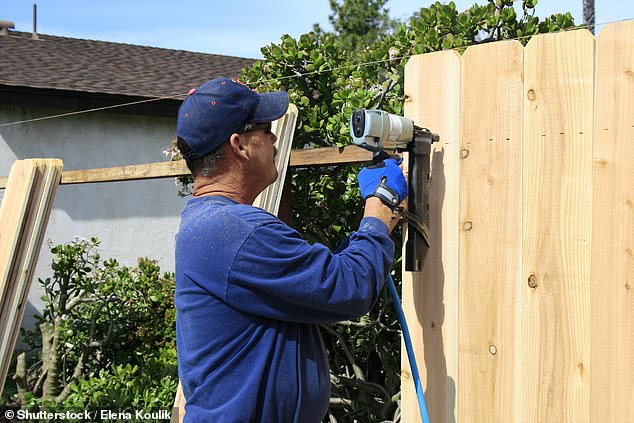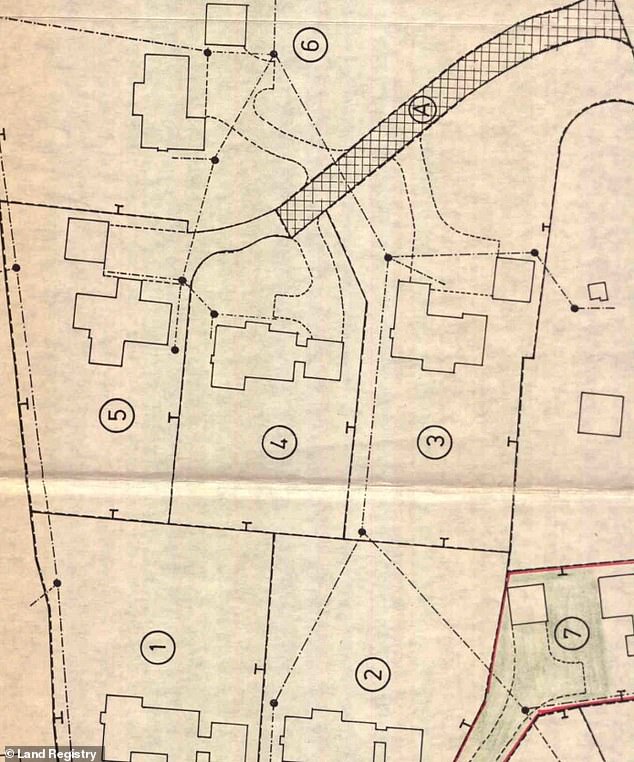Table of Contents
Border fences can cause friction between neighbors in the best of circumstances, especially if they come at a high cost.
Replacing a few fencing panels can cost hundreds of pounds – and even reach four figures, if rotten wooden posts need to be replaced with more durable concrete posts.
It is therefore not surprising that some homeowners try to avoid paying the bill if possible. But who is ultimately responsible for which side of a fence and how do you work that out?

We speak to a Land Registry expert about who is ultimately responsible for which side of the fence and the associated repair costs
There are some common misconceptions about who gets to own a fence, along with the associated repair and maintenance bills.
Some may argue that this is the left fence or the fence where the posts are visible, but these rules of thumb don’t work.
Greg Richardson from Toolstation explains: ‘Fence ownership and maintenance is a complex and confusing issue for many homeowners, which can often lead to heated disputes between even the friendliest neighbours.
‘Many people do not know that their garden fence may not be theirs, but the neighbor’s.
‘In those cases, permission is required before changes can be made, such as painting, repairing any storm damage and even hanging things on it.’


Boundaries can be the cause of heated discussions and give rise to arguments between neighbors
Fences where confusion arises over ownership are usually fences on a boundary. A boundary can also be marked by a wall, hedge, ditch, a piece of wire or even just the edge of a driveway.
They can be the cause of heated debates and give rise to arguments between neighbors, sometimes over just a few inches of land
“They can be the cause of heated discussions and give rise to arguments between neighbors, sometimes over just a few centimeters of land,” explains Adam Hookway of the Land Registry.
He added: ‘In my experience, the boundary can often become the weapon of choice when neighbors argue about things like noise, pets, parties or barbecuing when the washing is done.’
How to determine who is responsible for a fence
Mr Hookway confirms that there is no legal basis for claiming that owners are always responsible for one side of their boundary. The same applies to whether the fence posts are on someone’s side.
Instead, the first place to start is the Land Registry, where you can obtain a copy of the property register, title plan and any ‘filed’ deeds for both your own properties and those of your neighbours.
These documents are available for £3 from Government.uk for homes in England and Wales and Scotland’s Land Information Service for those in Scotland.
The Land Registry is happy to explain that the property plans show general boundaries and may not, for example, show small protrusions in the boundary or bay windows.
However, the documents may contain some clear clues that can help solve the problem.
For example, if the property plans show a ‘T’ on the inside of a boundary line, it means that side is responsible for the boundary fence or wall. The maintenance responsibility and entire costs will fall on the shoulders of the property owner on that side.
Meanwhile, if two ‘T’ symbols are mirrored across the border, like an ‘H’, it means there is a shared responsibility between the neighbors on each side.


If a property plan shows a ‘T’ on the inside of a boundary line, this means, according to the Land Registry, that this side is responsible for the boundary fence or wall (example shown)
What if there are no T-marks?
However, the Land Registry is quick to point out that so-called T-marks only appear when an agreement has been registered, and that most title plans do not have T-marks.
If nothing is apparent from the deed and property plan and there is no existing boundary agreement, the Land Registry recommends that you try to determine who is responsible for the fence by concluding a boundary agreement with your neighbor. This can be as simple as a conversation.
However, it is advisable to write down any agreements about boundaries between neighbors and register them with the Land Registry.
This indicates who is responsible for the maintenance and repairs of garden fences or other boundary maintenance. For example, there is a registered title if the neighbor moves or circumstances change.
The Land Registry does not register oral agreements, but it does register written agreements – invariably in the form of a deed or boundary agreement.
What happens if you pay for a fence that doesn’t belong to you?
And what happens if you pay for a fence to be replaced and it wasn’t your fence, but you now own it?
The Land Registry explains that although you own the materials, your responsibility for the border remains dependent on the agreement with your neighbor.
This may change over time, for example if you get a new neighbor, or if you change your mind.


